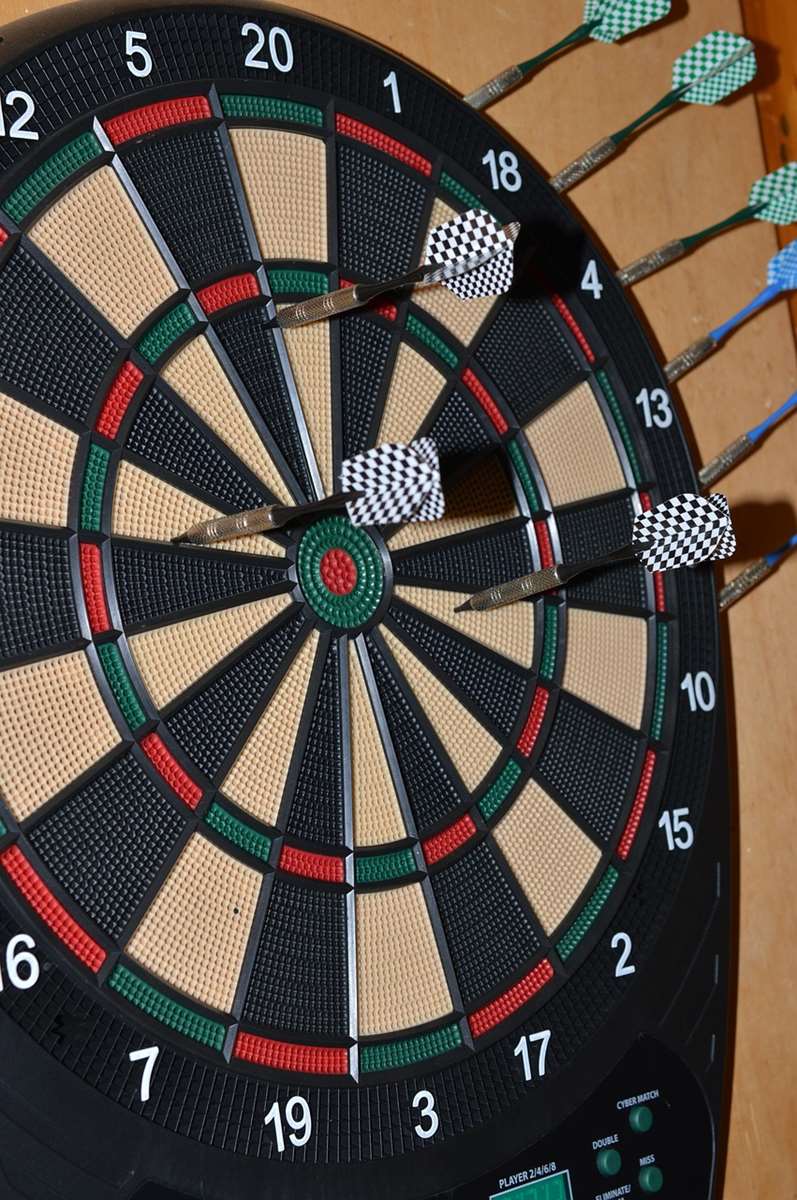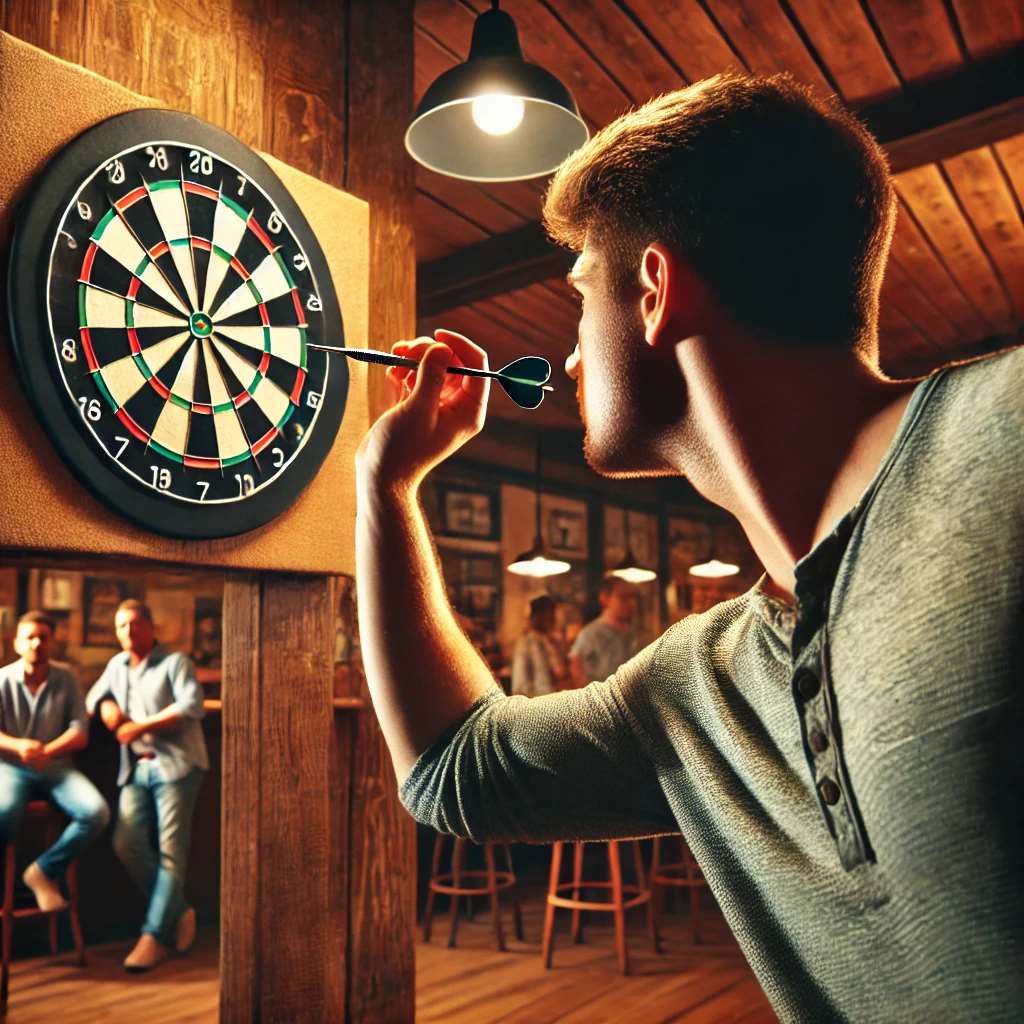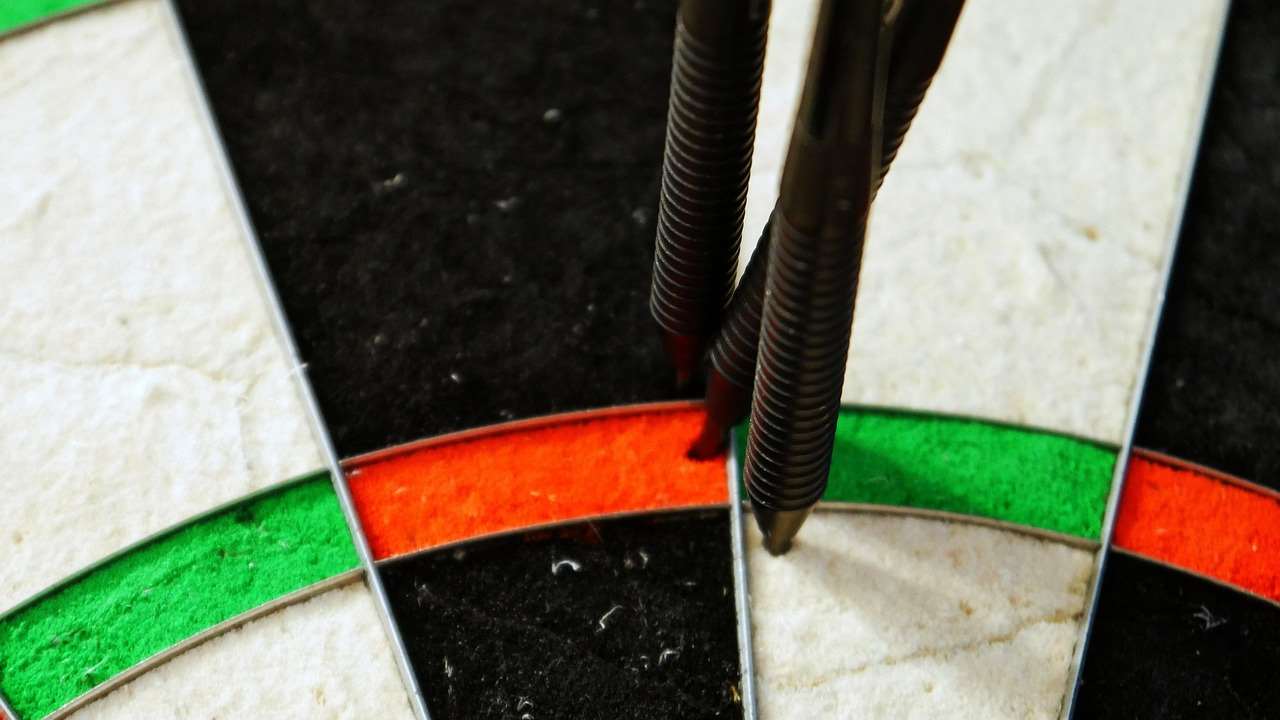Figuring out how to spot a player in form hinges on observing recent performance, statistical trends, and overall confidence; a player consistently hitting high scores and checkouts is likely in top form. This article explores key indicators and analytical techniques to help you identify players performing at their peak, including analyzing statistics, observing body language, and understanding psychological factors.
⚠️ Still Using Pen & Paper (Of een schoolbord)?! ⚠️
Stap in de toekomst! De Dart Teller -app behandelt alle scoren, stelt kassa voor, en volgt uw statistieken automatisch. It's easier than you think!
Probeer de Smart Dart Teller -app gratis!Klaar voor een upgrade? Klik hierboven!
Understanding the Key Indicators: How To Spot A Player In Form
Dus, you want to know how to spot a player in form? It’s not just about looking at the win/loss record. You need to delve deeper. Identifying a player’s peak involves a combination of objective analysis and subjective observation. We’ll explore both aspects in detail.

Statistical Analysis: The Numbers Don’t Lie (Gebruikelijk)
The foundation of any good form assessment is statistical analysis. Key performance indicators (KPI's) provide a measurable benchmark of a player’s current ability. Don’t just look at overall averages; focus on recent trends. Are they improving or declining? Here are some crucial stats to consider:
- Average Score: A higher average score consistently indicates good form. Look for averages above 90 to suggest a player is performing well. Check Player Average Score Analysis Darts for more insight.
- Checkout Percentage: This reflects a player’s ability to finish legs efficiently. A high checkout percentage, typically above 40%, is a sign of confidence and composure.
- 180s per Leg: The frequency of hitting maximum scores shows a player’s scoring power. A higher number of 180s per leg suggests aggressive and effective scoring. You can learn more about this in 180s Per Leg Stats For Betting.
- First 9 Dart Average: This measures the scoring power in the crucial opening phase of a leg. A consistently high first 9 dart average sets up easy finishes.
By tracking these statistics over a period of time, you can get a clear picture of a player’s current form trajectory. Be sure to look at different time periods (Bijv., last 5 matches, last 10 matches, last month) to get a comprehensive view.
Beyond the Averages: Digging Deeper into the Data
While averages provide a good overview, it’s important to understand the context behind the numbers. Look for patterns and anomalies. Bijvoorbeeld, a player might have a lower average score but a very high checkout percentage, indicating they are clinical under pressure.
Also, consider the opposition. A player’s statistics might be inflated by playing against weaker opponents. It’s essential to analyze performance against players of similar skill levels.
Another crucial aspect is the **stage of the tournament**. Some players thrive under pressure in major events, while others crumble. Take into account the importance of each match when assessing form.
Observational Cues: More Than Just The Numbers
While statistical analysis provides a solid foundation, astute observation adds another layer of understanding. How To Spot A Player In Form also involves understanding the non-verbal cues.
Body Language and Demeanor: Reading Between The Lines
A player’s body language can be a strong indicator of their mental state and overall form. Look for signs of confidence, focus, and composure. Here are some key things to observe:
- Posture: A confident player will typically stand tall and maintain good posture. Slumped shoulders and a hesitant stance can indicate a lack of confidence.
- Eye Contact: Direct and focused eye contact suggests concentration and determination. Avoidance of eye contact might reveal nervousness or a lack of self-belief.
- Reaction to Mistakes: How a player reacts to a missed dart can be very telling. A controlled and calm response indicates resilience, while frustration and anger suggest they are struggling mentally.
- Interaction with the Crowd: Some players thrive on crowd interaction, while others prefer to remain isolated. Pay attention to how a player engages with the audience and whether it seems to energize or distract them.
De “Eye Test”: Trusting Your Gut Feeling
Sometimes, despite what the statistics say, a player just *looks* like they are playing well. This is where your own judgment and experience come into play. Do they appear comfortable and relaxed on stage? Are they hitting their targets with conviction? Trust your instincts – often, they are right.
Psychological Factors: The Mental Game

Darts is a highly mental game, and a player’s psychological state can have a significant impact on their performance. Understanding these factors is crucial for spotting a player in form.
Confidence and Self-Belief: The Power of Positive Thinking
Confidence is arguably the most important factor in darts. A player who believes in themselves is more likely to perform well, even when facing adversity. Look for signs of self-assurance, such as positive self-talk, confident body language, and a willingness to take risks.
Handling Pressure: The Ability to Perform Under Stress
The ability to perform under pressure is another key indicator of form. Some players excel in high-stakes situations, while others falter. Pay attention to how a player handles critical moments in a match, such as deciding legs or match darts. Do they maintain their composure, or do they become visibly anxious?
Recent Form Impact Darts Betting: Momentum is Key
Momentum plays a significant role in darts. A player who has won several matches in a row is likely to be brimming with confidence and playing well. Omgekeerd, a player on a losing streak may be struggling with self-doubt and performing below their best. Consider the Recent Form Impact Darts Betting.
Analyzing Opponent Matchups: Head-to-Head Records Matter
How To Spot A Player In Form isn’t just about the player in question; it’s also about their opponent. A player might be in excellent form but still struggle against a particular opponent due to their playing style or a psychological barrier.
Head To Head Stats Darts Betting: Understanding the History
Head-to-head records can provide valuable insights into potential match outcomes. Some players simply have a better record against certain opponents, regardless of their current form. Check Head To Head Stats Darts Betting for helpful data.
Playing Styles: Matchup Matters
Consider how a player’s playing style matches up against their opponent. A slow, methodical player might struggle against a fast, aggressive player, and vice versa. Analyze the strengths and weaknesses of each player and how they might interact.

Motivation and Stakes: What’s on the Line?
The level of motivation and the stakes involved in a match can also influence performance. A player might be particularly motivated to win a major tournament or to qualify for a prestigious event. Omgekeerd, a player might be less motivated in a low-stakes exhibition match.
Practical Tips: Putting It All Together
Now that we’ve covered the key indicators, let’s look at some practical tips for how to spot a player in form:
- Watch as many matches as possible: The more you watch a player, the better you will understand their game and their tendencies.
- Keep detailed records of statistics: Track key performance indicators over time to identify trends and patterns.
- Pay attention to body language and demeanor: Observe how a player carries themselves on stage and how they react to mistakes and pressure.
- Consider opponent matchups: Analyze head-to-head records and playing styles to assess the potential for success.
- Factor in psychological factors: Consider a player’s confidence, motivation, and ability to handle pressure.
- Don’t rely solely on statistics: Trust your own judgment and experience.
- Consider using dart player performance analysis tools – these can help automate some of the data gathering.
Tools and Resources: Enhancing Your Analysis
Several tools and resources can help you analyze player form more effectively. Deze omvatten:
- Darts Statistics Websites: Websites like DartConnect and Darts Database provide comprehensive statistics on professional dart players.
- Darts News and Analysis Websites: Websites like Live Darts and Darts News offer in-depth analysis and commentary on the sport.
- Social Media: Follow dart players and commentators on social media for insights and updates.

Common Mistakes to Avoid
When attempting to assess a player’s form, it’s easy to fall into common traps. Here are some mistakes to avoid:
- Overreliance on short-term results: Don’t make judgments based on a single match or tournament. Look for consistent trends over a longer period.
- Ignoring the opposition: Always consider the quality of the opponent when evaluating a player’s performance.
- Failing to account for psychological factors: Don’t underestimate the impact of confidence, motivation, and pressure.
- Ignoring external factors: Travel fatigue, illness, and personal issues can all affect a player’s performance.
- Confirmation bias: Avoid looking for evidence that confirms your existing beliefs and be open to changing your mind.
The Future of Form Analysis: Advanced Metrics and Technology
The field of darts analytics is constantly evolving, with new metrics and technologies emerging all the time. Advanced metrics like Predictive Performance Rating (PPR) and Expected Checkout Value (XCOV) are providing more granular insights into player performance. Data visualization tools are also making it easier to identify trends and patterns.

As technology continues to advance, we can expect to see even more sophisticated tools for analyzing player form in the future.
Conclusie: Mastering the Art of Spotting Form
How to spot a player in form is both a science and an art. It requires a combination of statistical analysis, observational skills, and an understanding of psychological factors. By mastering these techniques, you can gain a significant edge in predicting match outcomes and identifying players who are performing at their peak. Now that you have a better understanding of Analyzing Dart Player Form Statistics, start applying these techniques to your own analysis and see the difference it makes! Start watching matches, tracking statistics, and observing body language – and you’ll be well on your way to becoming a form-spotting expert. Take your knowledge and apply it today to your darts viewing or betting strategies!
Hoi, Ik ben Dieter, En ik heb Dartcounter gemaakt (Dartcounterapp.com). Mijn motivatie was geen darts -expert - helemaal tegenovergestelde! Toen ik voor het eerst begon te spelen, Ik hield van het spel, maar vond het moeilijk en afleidend om nauwkeurige scores te houden en statistieken te volgen.
Ik dacht dat ik niet de enige kon zijn die hiermee worstelde. Dus, Ik besloot om een oplossing te bouwen: een eenvoudig te gebruiken applicatie die iedereen, Ongeacht hun ervaringsniveau, zou kunnen gebruiken om moeiteloos te scoren.
Mijn doel voor Dartcounter was eenvoudig: Laat de app de nummers afhandelen - het scoren, de gemiddelden, de statistieken, Zelfs checkout suggesties - zodat spelers puur kunnen richten op hun worp en genieten van het spel. Het begon als een manier om het probleem van mijn eigen beginners op te lossen, En ik ben heel blij dat het is uitgegroeid tot een nuttig hulpmiddel voor de bredere darts -community.